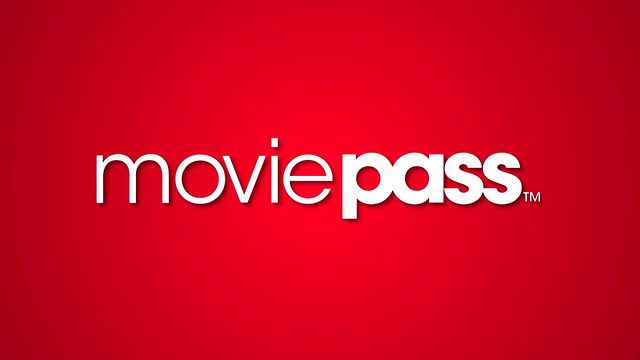In my last post, I discussed the difficulties of getting data from theaters, primarily due to misaligned incentives. It is not due to malicious intent per say, rather that the costs of data collection and analysis do not contribute substantially to their bottom line.
In the distribution window I will talk about today, I'm going to continue to follow the money. This will give a picture of where the incentives lie and why filmmakers get left out.
Warning: This is going to be a long walk, but important in understanding where filmmakers and their representatives have different objectives. So hang in there! For those of you who aren't here to read, the next little bit a nice summary.
tl;dr - Platforms like iPhones, Netflix, and Comcast have the data we want, but as filmmakers our only link to them is through a distributor who has no interest in risking the loss of their value proposition by pushing for data transparency. Thus, it's up to filmmakers to find different strategies for getting data about their audience. These strategies are things are what I will be exploring in the next quarter of my fellowship.
VOD
The Video On Demand space consists of two separate models, Transactional VOD and Subscription VOD. The former is a one time payment that allows for the purchase or rental of video content. This includes both cable providers such as Comcast and Time Warner Cable (soon to be the same company) and online marketplaces like iTunes and Google Play. Subscription VOD consists of Netflix, Hulu Plus, and Amazon Prime who offer a library of content for a monthly or yearly fee.
Now that we've gotten the boring stuff out of the way, let's move into the fun part: cash money!
None of the platforms mentioned above will just let you throw your film on their service. These companies like to have some arbiter of the content that makes it on to their service, both to reduce their overhead in managing the films and also to ensure only the highest quality films are shown.
There are two ways to get your film on a VOD platform, either through a distributor or through an aggregator, each of whom has a different way of making money off of you.
Distributor
Distributors that work with indie film in the VOD space are numerous. Their method of acquisition is to (sometimes) offer a minimum guarantee to the filmmakers in exchange for rights to put the film up across multiple platforms. This MG is an upfront payment to the filmmaker that must be recouped by the distributor before any revenue from the sale of the film returns to the producers. Furthermore, distributors must also recoup the costs of advertising, marketing, and other services in advance of returns to the filmmaker. Finally, they take a split of those profits as well, generally between 25 - 40%.
If you sell your film to a distributor like IFC, for instance, they are likely going to ask for worldwide rights for all media. This means your digital VOD rights as well as any theatrical, physical media, television, etc. Other distributors like Gravitas work almost completely on digital VOD platforms, so you will be able to retain some of your rights to other venues, but likely with no minimum guarantee.
Aggregator
If you have the money to pay upfront, an aggregator like Distribber or Quiver will take your film, ensure quality to the necessary standards, package it with other films, and put them on various the VOD platforms. Because you pay them, they do not own any rights to your film and do not take share in profit participation. 100% of the sales that come in go directly to the filmmaker.
The cost for these services are usually between $1,000 - $2,000 and increase depending on the number of platforms you'd like the film be for sale/view. If you want in available on all satellite and telco platforms, this adds roughly $5000 to the cost.
Example
What is the benefit of going with distributor vs. that of going with an aggregator? In a frictionless market, this question is complicated but not impossible to estimate. Let's use online transactional VOD only and assume platforms are taking 50% of the sales. For a movie priced at $10 dollar, there is a clear point where one see the benefits of an aggregator over a distributor.
In this case, selling more than 1,600 copies results in a better outcome by going through an aggregator. Something certainly attainable for a film with decent marketing, publicity, and word-of-mouth.
So this is the answer, right? Plug in these numbers, get an answer as to how many units you'd have to sell, and make your decision. How easy!
Not Even Close
In the example, I mentioned something about "frictionless markets." Basically this means that all methods of putting content out there are equal and none is subject to any benefit or harm that isn't experienced by the entire market. Turns out, this is where distributors exhibit their leverage.
As businesses, they have relationships with platforms and can lobby for better placement of their titles and, depending on the platform, more favorable terms. And the difference between landing on the front page of iTunes and being buried under hundreds of other films can make a huge difference to your sales. So while 1,600 copies may be the break even point, a good distributor will shift the playing field in your favor to ensure you get more sales than you would without them.
You may be asking by now, "What does any of this have to do with DATA?!?" Well, now that we have walked through the value proposition that a distributor offers over a DIY model, we can talk about how that value proposition keeps them from getting filmmakers the data they need.
Why You Get Nothing
There are three points here. First, distributors' marketing arms are not concerned by and large with the film's audience, but rather with the platforms (iTunes, Amazon, Cable Providers, etc.) In order to pay off their value proposition, distributors have to be able to convince these other companies to act in ways that are advantageous to them, such as placing their titles in front of more people. Notice I said "more" people, not necessarily the "right" people.
Secondly, and stemming from the first point, is that distributors have not been pushing for data regarding the audience that purchases the film. This is because the platforms run by cable companies focus more on service uptime and connectivity than user interaction. Those run by tech companies flatly do not share their data.
And perhaps most important of all, were a distributor to expose to a filmmaker ways to measure and connect with an audience, the would immediately weaken their own position. Distributors would like filmmakers to believe that they have some expertise in finding an audience for a film and would suffer greatly if the creators could speak directly to an audience.
For these reasons, the data filmmakers want is either not being collected or not being released. Information about a film's audience on VOD is therefore kept by entities that the filmmaker never directly works with (platforms), and their ambassador to these companies (the distributor) has no incentive to push for transparency.
Unite!
As filmmakers, what can we do? First, we can begin to share the data we do have. Knowing what data is out there, and how little there is, will begin to motivate new filmmakers to demand more. Secondly, we can migrate to platforms that are more transparent with their data. Which, coincidentally, will be the topic of next week's post.
Stay tuned!











